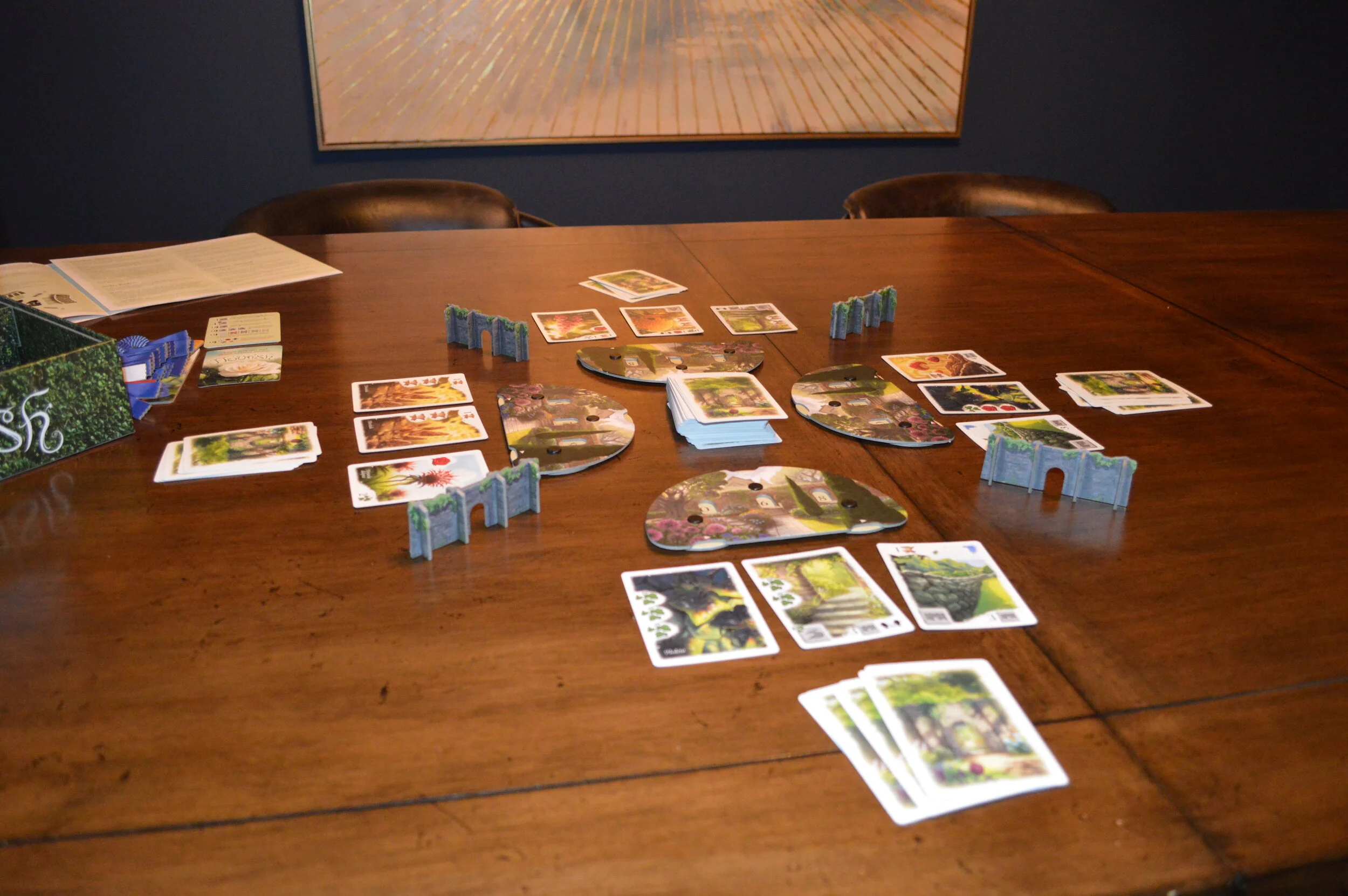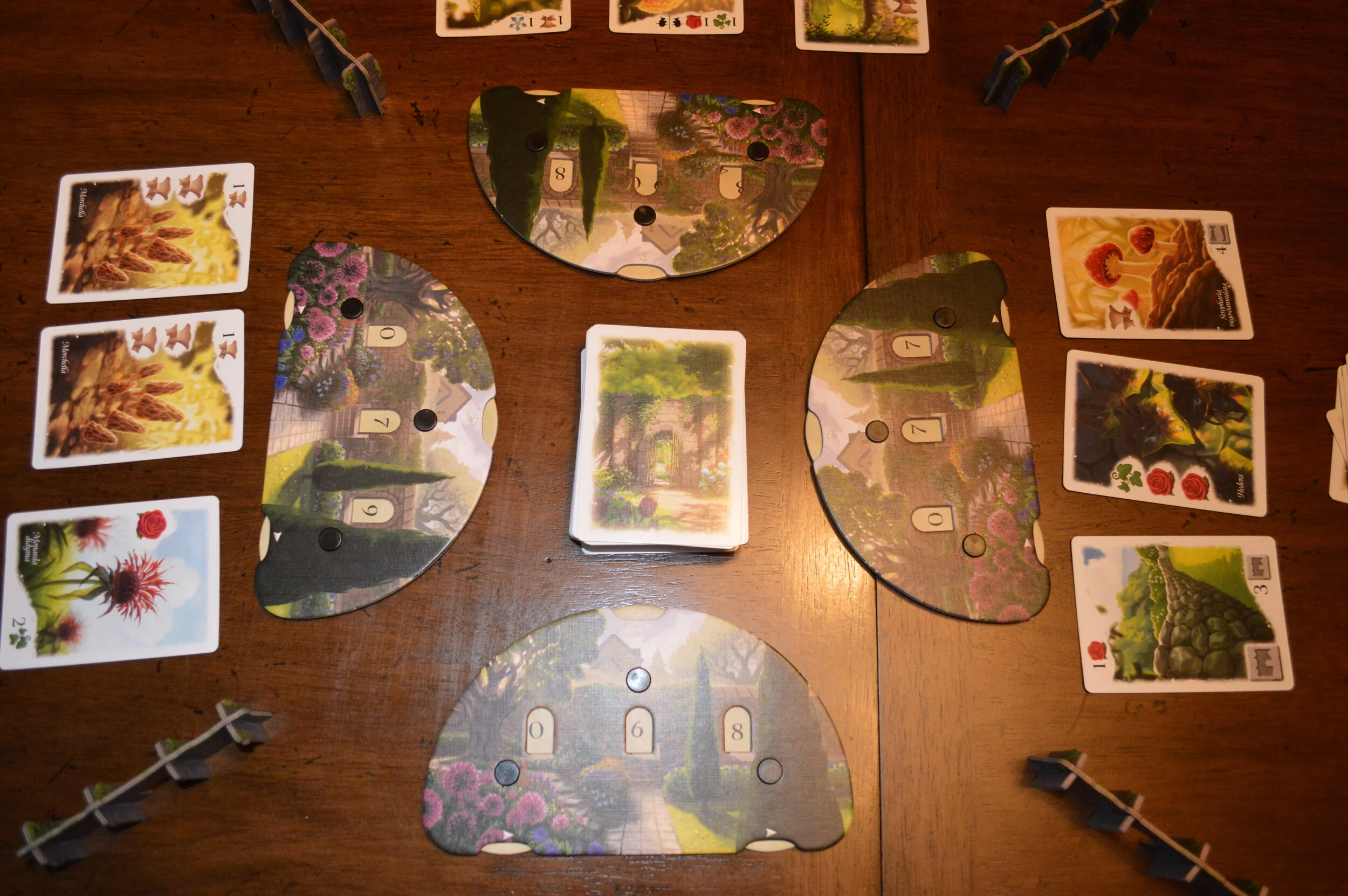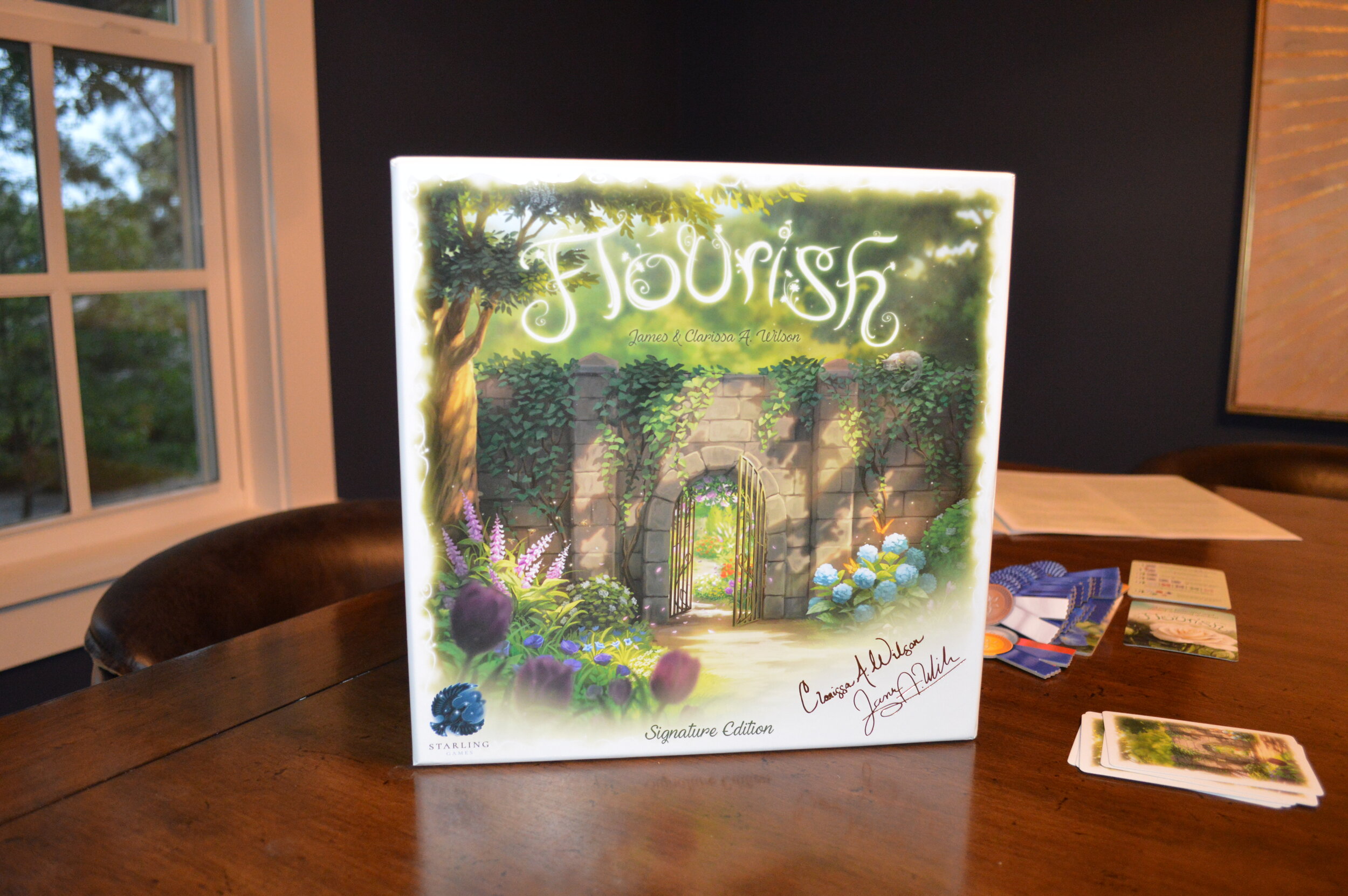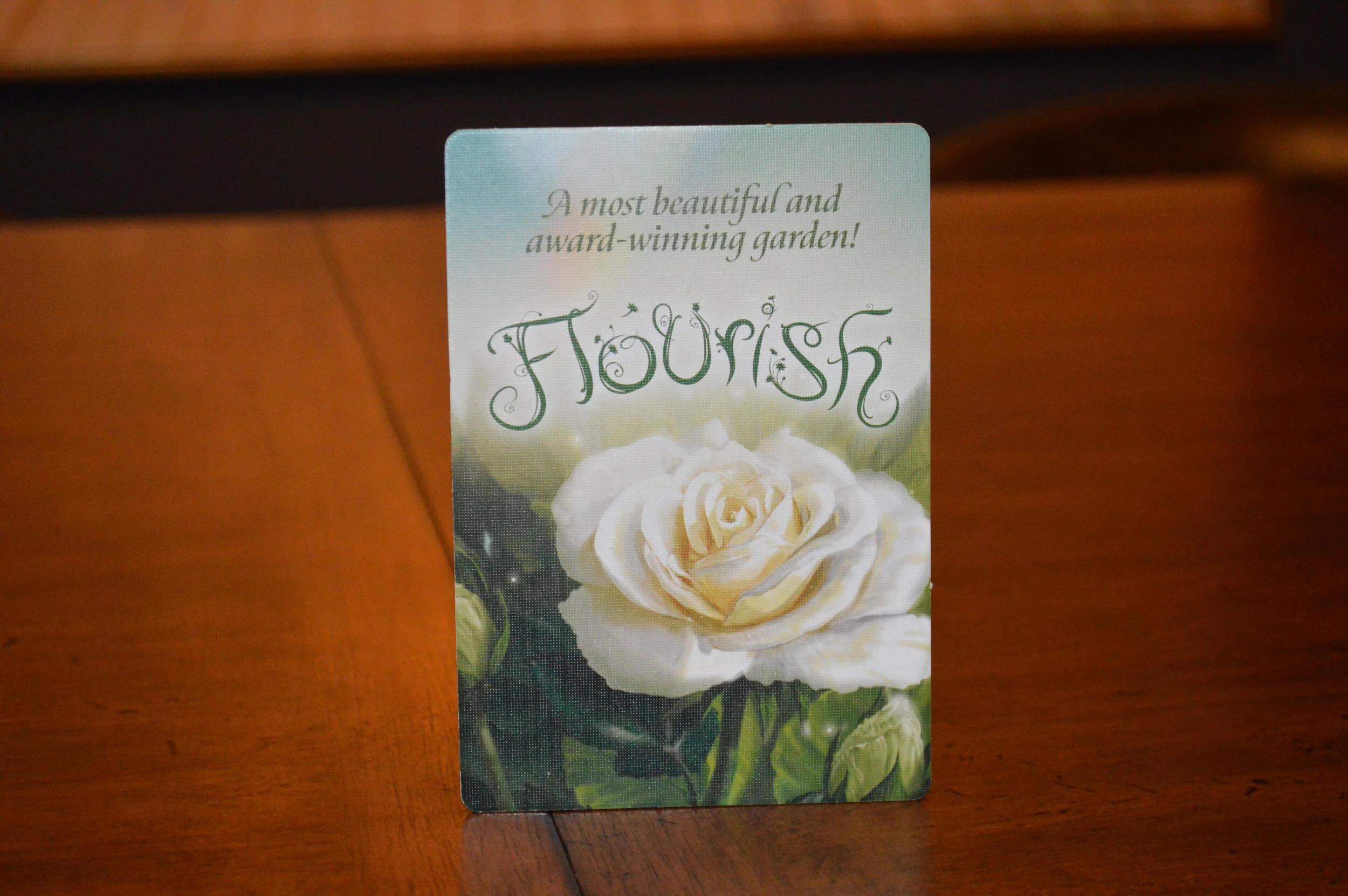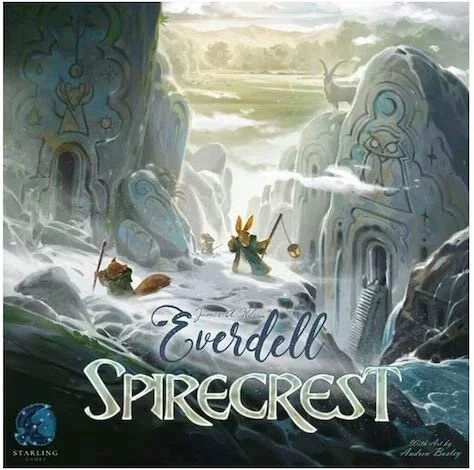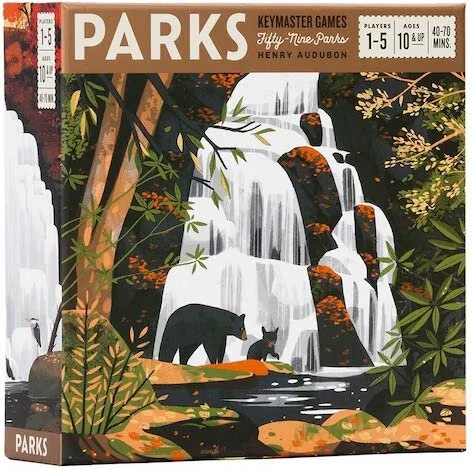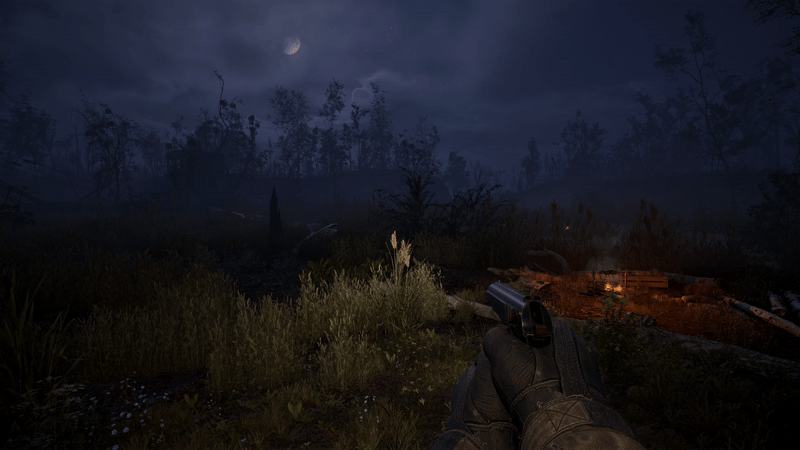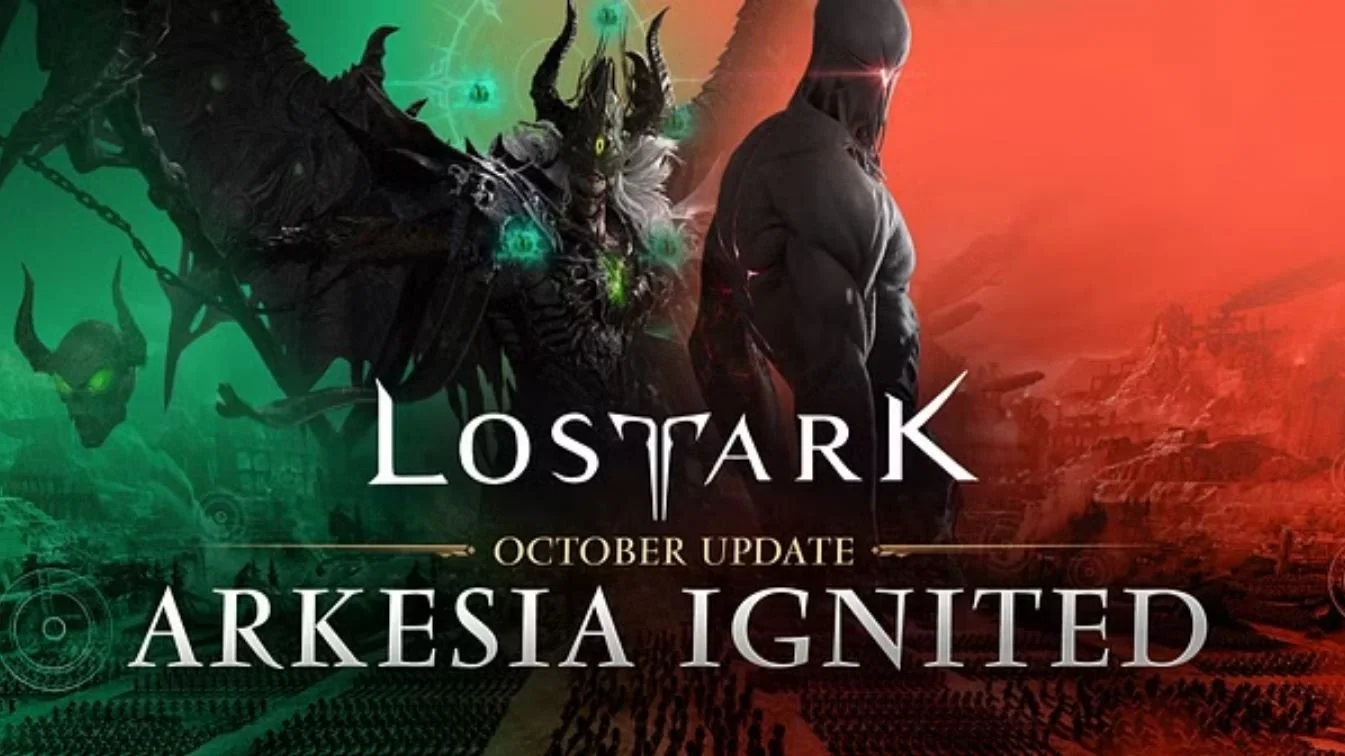Flourish is the next game from designers James and Clarissa A. Wilson, the creators of the darling worker-placement game Everdell. The garden-building beauty is releasing from Starling Games and it’s now live on Kickstarter!
It’s an immensely approachable game that can accommodate one to seven players. That leaves a lot of possibilities for the player count and the game will likely only last between thirty and sixty minutes.
If you’ve played Everdell, then you’ll not be surprised as to the beautiful design of the game, and there are more 3D constructions to enjoy, with the base game and even more with the Friends and Follies expansions that are available. So, if you get the signature edition of the game, like the one provided for this review, expect quite a bit of assembly before you can trade in the punchboards for the nicely organized game box. But it’s all worth it once you get this The Secret Garden tabletop adventure out and ready to play!
With competitive and cooperative play, a solo mode, two game variants, and the possible Friends and Follies expansions, there are a lot of ways to play Flourish.
Let’s see if the Wilsons have conjured magic once again to create something memorable.
STORY
A long, long time ago, before The Secret Garden had started to bloom and blossom, when the paths weren’t cracked and mysterious, when the walls weren’t overtaken by ivy, when it was just a fertile plot of land, there existed a troupe of gardeners.
This troupe of gardeners was renowned across the land for their vegetative genius. Their fantastic fauna. Virtuosos of flower. Innovators of seed. Pioneers of outdoor sculptures.
And these gardeners decided to start with barren land and create stunning vistas of trees, beehives, and beds upon beds of finely-cultivated flowers. This is the zenith of horticulture. This is a flower frenzy cross-pollinated with garden delirium.
It’s also a card game.
GAMEPLAY
The game is really easy to learn. It’s played over four rounds, three normal rounds with turn-based card play and drafting, as well as a fourth blitz round where players select three cards from their final hand to play all at once.
It’s a calm gaming experience with a brisk but leisurely pace. I know that’s contradictory, but it plays in an hour or less depending on the player count and it’s the kind of game where the players will sit back, drink a nice cup of tea or a summer cocktail (whatever you’re into), and casually try to create the most interconnected and high-scoring garden.
Gameplay is reminiscent of Everdell—minus the resource gathering, worker-placement, etc.—and 7 Wonders. Whereas the tableau in Everdell alters and enhances a player’s options and creates a true tableau-building experience, Flourish uses the tableau as a visual array of the cards rather than an integral part of the mechanics (though that’s changed somewhat in the Follies expansion with the use of spatial scoring). Card-drafting originates from the discards of other players and the central deck, changing the continual passing that occurs in 7 Wonders but, in doing so, forcing some interesting decisions on players as they weigh what cards to share with what players. It’s a matter of keeping the cards that you need for your garden while also denying easy scoring opportunities for other players with careless discards.
Cooperative play was one of my first sessions of the game, and it went well. The limit on direct communication reminded me of Hanabi, and it was exciting to try and optimize my own garden while trying to help out the other players by offering useful cards in conjunction with what they were playing on the table. We missed the point totals that allowed for medals, but it was our first attempt at the cooperative mode, so I was fine with that. It would be interesting to challenge players to work together well and decipher the intent of the others’ cards to aim for gold medals.
I felt like the competitive play was well-balanced, as well. Our game ended with all three players within ten points of each other, which felt satisfying given that each player tried out completely different combinations of flowers and stone symbols.
As usual, I like anything that adds a little more complexity and variety to a game like Flourish, so I recommend trying out a game with both the Friends and Follies expansions. The Friends expansions reminded me a little of the Big Critters from Everdell but these cards just function as additional scoring opportunities. It’s small but combined with the Folly buildings, they create a lot of potential for scoring outside of the normal rules.
The only thing you’ll have to get used to is the different iconography on the cards. One area denotes end-of-round scoring. Another area marks the active symbols that count toward scoring criteria. The bottom part of the card includes both stone symbols and end-of-game scoring criteria. It can look a bit cluttered at first, but once you’re able to familiarize yourself with the cards, it becomes easier to distinguish what you need to look at and when.
I like what Flourish has to offer. It may not be as readily grabbed off the shelf as Everdell, but that is specific to my tastes. It’s a beautiful game that features a lot of really engaging gameplay without intimidating players away from the table.
If you want something pretty, something light, Flourish will be there for you. It’s like drinking wine with friends on the patio outside. The bees aren’t the only things buzzing.
VISUALS
It wouldn’t be a very good game about flowers and gardens if the artwork wasn’t lovely.
Thankfully, the visuals are on par with the gameplay. Four artists collaborated to create the dreamy aesthetic for the game. Dann May—frequent collaborator with Starling Games—is joined by April Borchelt, Christina Qi, and Naomi Robinson. These creatives have brought to life the outdoors in an elegant way that sits on the table with sophisticated grace. The walls separating the players give a distinct layout to the card tableaus and the game components. The Folly structures lend verticality to the game, resulting in a striking array of cards, cardboard constructions, and colorful artwork.
If you’ve played anything from Starling Games, you’ll recognize the exemplary art design and appreciate what is being offered with Flourish.
REPLAYABILITY
Everdell relies on its expansions, solo play, and other modules from the Bellfaire addition to vary gameplay.
James and Clarissa A. Wilson have learned from those design choices and implemented the same kind of mechanics in Flourish. There are a lot of ways to play. Even without the expansions, you can play with one to seven players. So that’s some exciting solo play against McGregor, the other gardener (with a pretty intimidating name and green thumb). But you can also have seven people playing this game. That’s a lot in tabletop terms. Not to mention the game variants that allow for different objectives for players to pursue.
I can see bringing out Flourish for a lot of different people. My mother likes social games devoid of overwhelming complexity and she grew up with card games. This would be something she could enjoy. My sister likes beautiful games with lovely art and accessible mechanics. I have friends who are intimidated by Euro-style games or visually-dense boards. And I have other friends who don’t really like games, period. All of them would be able to find something in Flourish to enjoy. That speaks to the game’s appeal.
WHAT IT COULD HAVE DONE BETTER
Flourish is not a game designed for heavy strategy gamers. It may be engaging enough to satisfy those gamers, but it’s a more sedate game with a relaxed pace and simple enough decisions.
That’s part of the design, though. The only way for you to incorporate more intricate decision-making is to include both the Friends and Follies expansions while also pursuing an additional objective like a cooperative medal or ribbon-hunting.
Ultimately, though, this can’t be leveled as a criticism of the game. Flourish is unapologetically a simple game. That’s part of the beauty and the charm. It’s just that a gamer like me who’s used to greater complexity may not want to bring it off the shelf as much as something like Everdell.
The one issue that I did have was in assembling a lot of the Folly structures that came with the expansions in the signature edition. The towers with two circular levels were cut a little too tightly on the central part of the tower. Getting the bottom base to slide all the way down frequently bent or damaged the integrity of the cardboard pieces.
Now, this is a pre-release copy of the game that I received prior to the launch of the Kickstarter. So, it’s entirely possible that by the time fulfillment happens that this issue will be fixed.
At the end of the day, however, this is a Starling Games production, which means the quality of the components and the design of the board and gameplay is top-notch!
VERDICT
Flourish excels in bringing players to the table for a game layered with more subtle complexity than at first glance. If you’re trying to compete for the highest score or collaborate for a group medal, there are strategies or combinations of cards that you can aim for.’
The Friends and Follies expansions add even more nuance to the game, and it really opens up. Keeping in mind the high player count that Flourish can support, it’s really something that could sustain a gaming group through a lot of play.
It’s a tranquil walk through a glade of flowers, features, and all manner of beauty. The card-drafting is sure to please fans of other adventures from Starling Games, specifically those designed by James and Clarissa A. Wilson.

